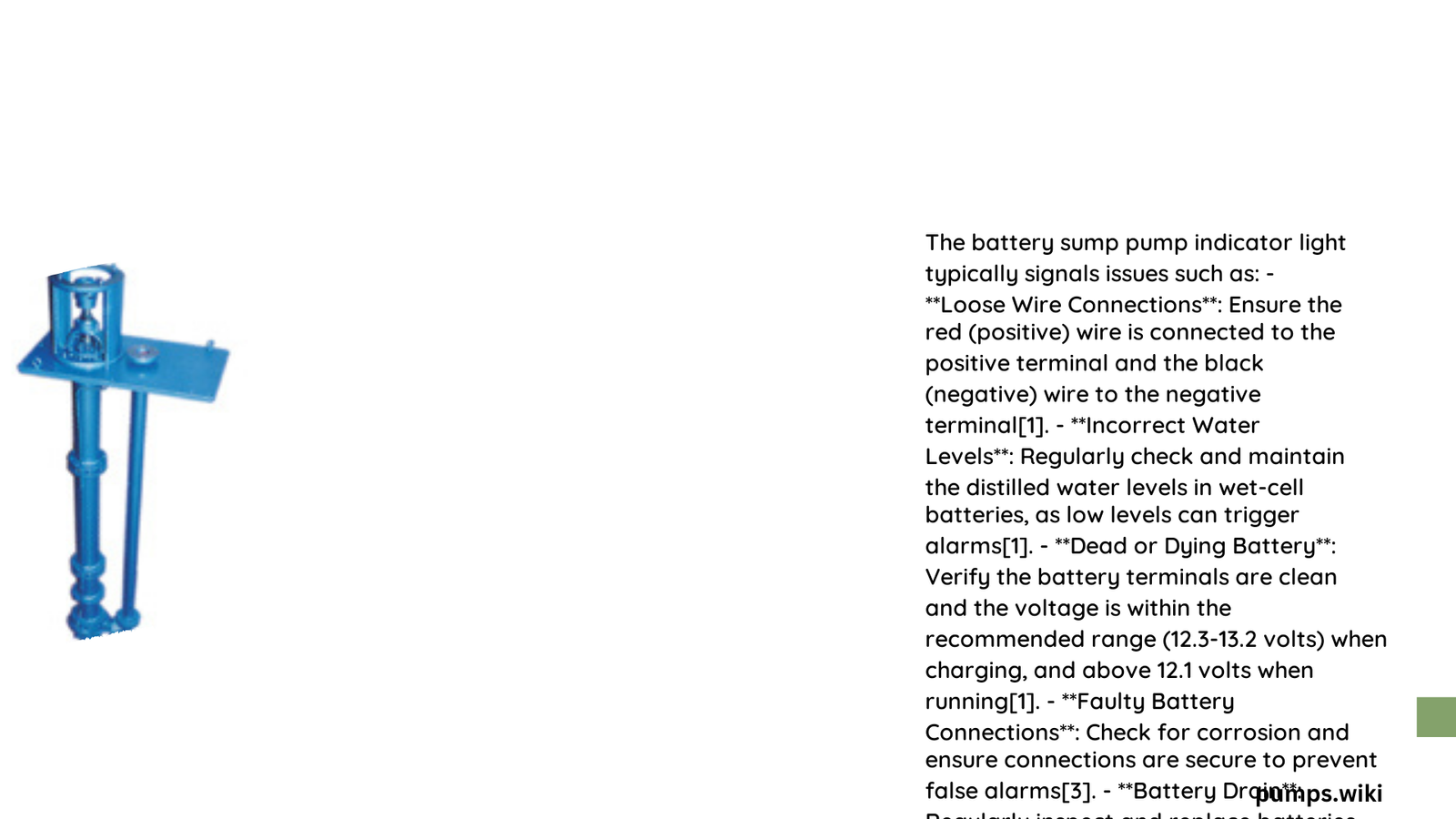Battery sump pump indicator lights are crucial components that provide vital information about the system’s status, battery charge, and potential issues. These lights use color codes and patterns to communicate different states, such as full charge, charging, or low battery. Understanding these indicators is essential for maintaining a reliable sump pump system and preventing basement flooding. This article delves into the specifics of battery sump pump indicator lights, their meanings, and how to address common issues.
What Do the Different Colors of Battery Sump Pump Indicator Lights Mean?
Battery sump pump indicator lights typically use a color-coding system to convey information about the system’s status:
-
Green Light: Generally indicates a fully charged battery and normal operation. For instance, in the Ice Cap Battery Back up system, a green light signifies that the battery is fully charged and the system is running on AC power.
-
Red Light: Usually suggests that the battery is charging or not fully charged. A steady red light often means the battery is not at full capacity or is currently powering the pump due to a power outage.
-
Blinking Red Light: In some systems, this can indicate the battery is actively charging. The frequency or pattern of blinking may also convey additional information, such as the remaining battery charge.
It’s important to note that color meanings can vary slightly between different manufacturers and models. Always refer to your specific system’s manual for the most accurate information.
How Does the Battery Sump Pump Charge Indicator Work?

The charge indicator in a battery sump pump system provides crucial information about the battery’s status. Here’s how it typically functions:
-
Voltage Readings: The system continuously monitors the battery’s voltage to determine its charge level.
-
Fully Charged State: A standard 12-volt battery is considered fully charged when:
- The voltage reading is around 13.5 volts with the trickle charger plugged in.
-
After unplugging the charger, the voltage should be between 12.3 and 13.2 volts.
-
Partially Charged State: If the voltage drops below 13.2 volts after the charger is unplugged, it indicates the battery is not holding a full charge.
-
Low Battery State: The battery is considered low if:
- The voltage is below 12.1 volts while the pump is running.
- The voltage is below 11.6 volts when the pump is not in use.
The charge indicator uses these voltage readings to determine which light to display, helping you understand the current state of your battery.
What Are Common Causes of Battery Sump Pump Warning Lights?
Several issues can trigger warning lights on your battery sump pump system:
-
Loose Wire Connections: Insecure connections between the battery and the system can cause false alarms.
-
Low Battery Levels: A dying or dead battery will trigger warning lights.
-
Incorrect Water Levels in Battery Cells: For wet-cell batteries, improper distilled water levels in individual cells can activate alarms.
-
Blockages or Mechanical Failures: Clogs or mechanical issues in the pump can strain the backup battery, triggering warnings.
-
Power Outages or Electrical Problems: Issues with the power source can affect the battery’s charge and activate warning lights.
How to Troubleshoot Battery Sump Pump Indicator Light Issues?
Follow these steps to troubleshoot issues with your battery sump pump indicator light:
-
Check Connections: Ensure all wires are securely connected and free from corrosion.
-
Test Battery Voltage: Use a multimeter to check the battery’s voltage:
- Measure between the positive and negative terminals.
-
Compare readings to the voltage ranges mentioned earlier for fully charged, partially charged, and low battery states.
-
Inspect Water Levels: For wet-cell batteries, check and adjust the distilled water levels in each cell if necessary.
-
Examine the Pump: Look for any blockages or mechanical issues that might be straining the system.
-
Verify Power Supply: Ensure the main power supply is functioning correctly and that there are no electrical issues affecting the battery’s charge.
-
Consider Environmental Factors: Temperature and humidity can affect battery performance. Ensure the battery is in a suitable environment.
What Are the Maintenance Requirements for Battery Sump Pump Indicator Lights?
Proper maintenance is crucial for ensuring your battery sump pump indicator lights function correctly:
-
Regular Inspections: Check the indicator lights at least monthly to ensure they’re working properly.
-
Battery Maintenance:
- For wet-cell batteries, check and maintain fluid levels regularly.
-
Clean battery terminals and connections to prevent corrosion.
-
System Testing: Periodically test the system by simulating a power outage and observing the pump’s operation and indicator lights.
-
Battery Replacement: Replace the battery according to the manufacturer’s recommendations, typically every 3-5 years depending on usage and battery type.
-
Environmental Control: Keep the area around the sump pump and battery clean and dry to prevent environmental factors from affecting performance.
What Specifications Should I Look for in Battery Sump Pump Light Indicators?
When choosing or evaluating a battery sump pump system, consider these specifications for the indicator lights:
-
Response Time: Look for systems with immediate response times for indicator lights to ensure prompt alerts.
-
Durability: Choose indicator lights designed to withstand typical basement conditions, including moisture and temperature fluctuations.
-
Clear Color Coding: Opt for systems with easily distinguishable color codes for different states (e.g., green for fully charged, red for issues).
-
Additional Features: Some advanced systems may offer:
- Digital displays for more detailed information
- Audible alarms in addition to visual indicators
-
Remote monitoring capabilities
-
Power Efficiency: Ensure the indicator lights don’t significantly drain the battery, especially during power outages.
By understanding and properly maintaining your battery sump pump indicator lights, you can ensure your system remains reliable and effective in preventing basement flooding. Regular checks and prompt attention to warning lights will help keep your sump pump system in optimal condition.
